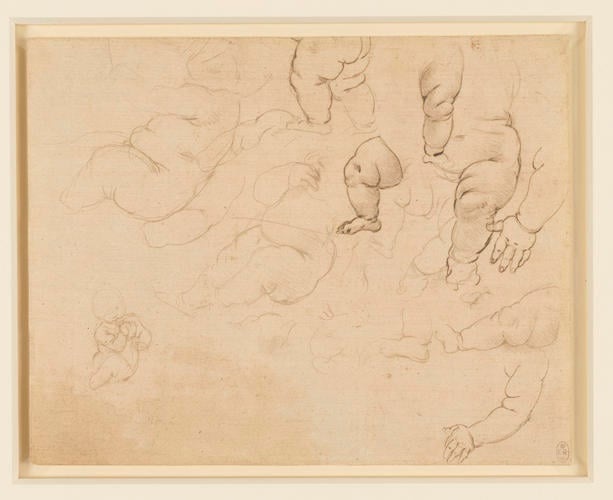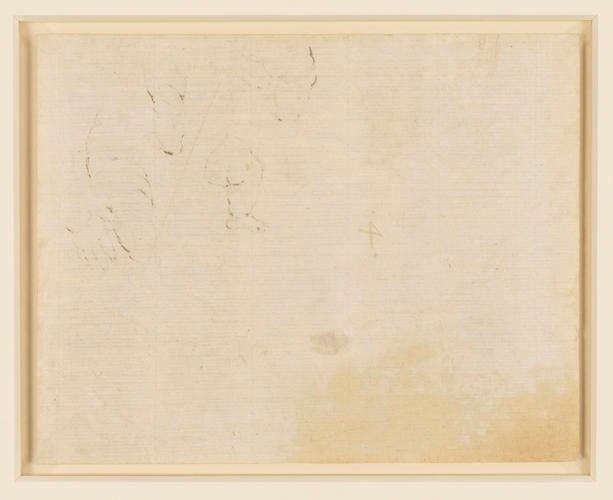-
1 of 253523 objects
Studies of an infant c.1490-92
Metalpoint, pen and ink, on pale pinkish-buff prepared paper | 17.1 x 21.8 cm (sheet of paper) | RCIN 912569

Leonardo da Vinci (1452-1519)
Studies of an infant c.1490-92

Leonardo da Vinci (1452-1519)
Studies of an infant c.1490-92


-
A sheet of numerous studies of a naked baby, chiefly of the legs: two are of the body, one in profile to the left, the other three-quarters to the left, with the fingers in the mouth. Melzi's number 4.
This is a typically spontaneous page of life drawings from the first half of Leonardo's career. It is executed mainly in metalpoint on a pale pink prepared ground; though many of his metalpoint drawings have faded, the studies on this sheet must always have been rather faint, and Leonardo reinforced some of the outlines with strokes of pen. The drawing has often been dated in the 1470s, Leonardo's first period in Florence, but the confident, fluent lines suggest a later date, when he was based in Milan, and indeed not long before he abandoned metalpoint in the early 1490s.
One of the most important artistic developments of the Renaissance was the growth in drawing from the life. The boom in book-printing during the late fifteenth century meant that paper was becoming rapidly cheaper, and thus did not need to be used so carefully; and in painting in particular, an emphasis on invention and the artist's individual imagination was gradually supplanting a dominant concern with craftsmanlike skill and execution. Many of Leonardo's drawings, throughout his life, cannot be connected with a particular project: he used drawing to develop his eye and hand, and as a tool to explore the world around him. And even where a connection exists, the drawing is often far removed from the final product – he would fill a page with spontaneous sketches, 'brainstorming' the project to stimulate new ideas.
The drawing was presumably conceived in the context of a composition of the Madonna and Child, for the small sketch at lower left shows the infant raising his right hand in blessing. In the larger sketch at upper left the child is suckling – the action, if not the pose, of the Child in the Madonna Litta (St Petersburg, Hermitage), painted to Leonardo's designs around 1490 – and at the centre he puts his fingers in his mouth, perhaps to eat a Eucharistic grape. The smaller studies mostly in the right part of the sheet concentrate on the individual limbs of a healthy, chubby child: the Christ Child in Italian painting of the fifteenth century often reached grotesque degrees of plumpness. Some of the limbs are close in their details to those of the Child in Leonardo's Benois Madonna (also Hermitage), though that painting was probably executed several years before this sheet – Leonardo habitually repeated motifs throughout his career, sometimes decades apart.
Provenance
Bequeathed to Francesco Melzi; from whose heirs purchased by Pompeo Leoni, c.1582-90; Thomas Howard, 14th Earl of Arundel, by 1630; probably acquired by Charles II; Royal Collection by 1690
-
Creator(s)
Acquirer(s)
-
Medium and techniques
Metalpoint, pen and ink, on pale pinkish-buff prepared paper
Measurements
17.1 x 21.8 cm (sheet of paper)